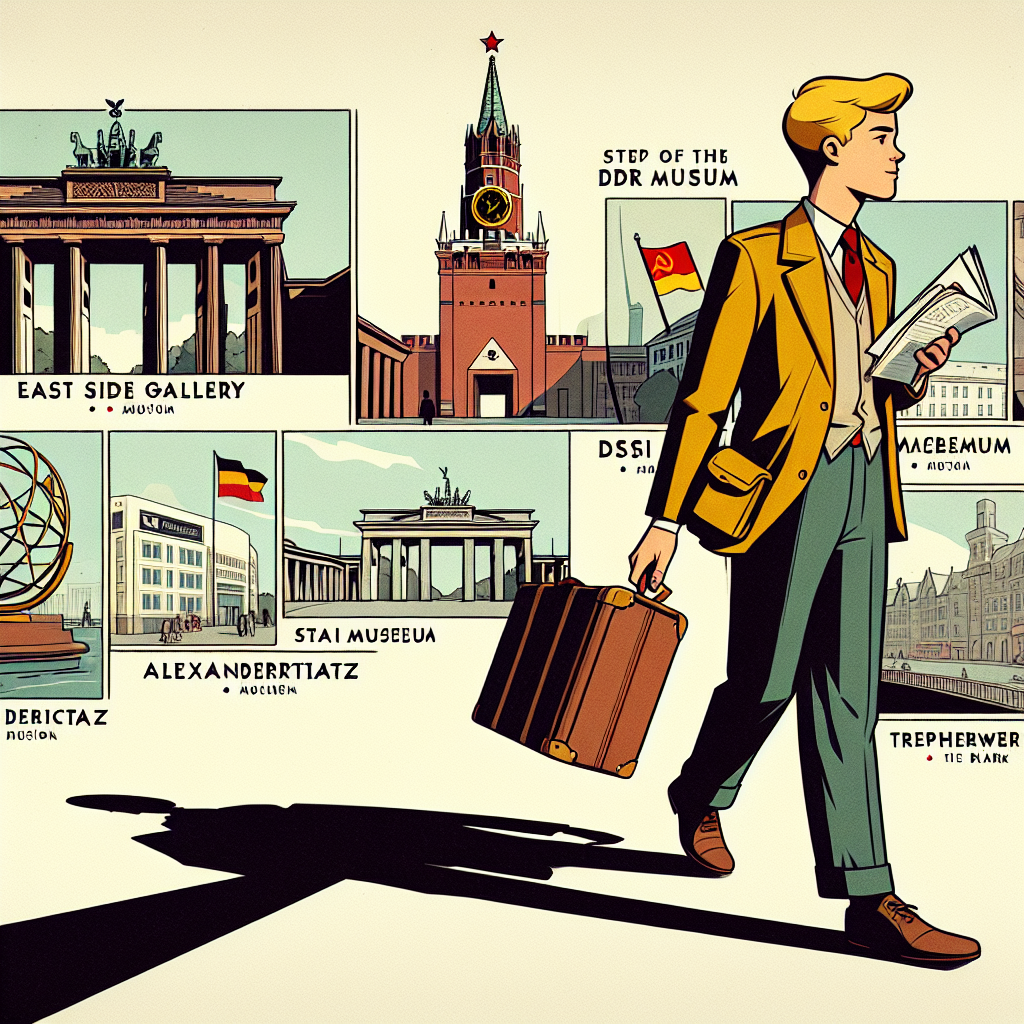Travel notes
The second day of my assignment in Berlin summoned me to the east, where the scars of history are deeply etched into the city’s fabric. Waking to the sound of a faint drizzle against my window, I set forth with a resolve to explore East Berlin, a place where every brick seems to whisper tales of the past. The day was dedicated to reflection, to understanding the complexities that have shaped this part of the city. My journey began at the remnants of the Berlin Wall, standing solemn and poignant at the East Side Gallery. As I walked along, tracing the colorful murals that now adorn its surface, I contemplated the profound division it once represented. Moving forward, I ventured into the heart of East Berlin, where the DDR Museum offered an immersive glimpse into life under the GDR’s regime. Interactive exhibits and personal stories painted a vivid picture of the everyday realities faced by East Berliners, fostering a deeper empathy within me. The Stasi Museum was next, revealing the chilling extent of state surveillance and control, leaving me with much to ponder about the value of freedom and the human spirit’s resilience. My steps then led me to Alexanderplatz, pulsating with life, yet shadowed by the towering Fernsehturm, a symbol of communist power still dominating the skyline. As nightfall approached, I found solace in the quietude of the Treptower Park, home to the poignant Soviet War Memorial. The vastness of the memorial, with its imposing statues and solemn expressions of sorrow, served as a powerful reminder of the cost of war. Reflecting on the day’s journey, I realized that East Berlin, with its palpable history and evolving identity, embodies the spirit of resilience and transformation. It was a day of profound introspection, not just about the city’s past, but also about the lessons it offers for diplomatic understanding and human connections. As I penned down these reflections, the heartbeat of history seemed to pulse stronger, urging a deeper engagement with the world’s complexities.
Travel notes:
📍**East Side Gallery**
– **Location**: Mühlenstraße, 10243 Berlin
– **Getting There**: Accessible via Warschauer Straße train and metro station
– **Price**: Free
– **Description**: A historic section of the Berlin Wall adorned with murals symbolizing freedom and resilience. A must-visit for those interested in the city’s Cold War history.
📍**DDR Museum**
– **Location**: Karl-Liebknecht-Str. 1, 10178 Berlin
– **Getting There**: Close to Alexanderplatz, accessible by train, tram, and bus
– **Price**: €9.80 for adults, concessions available
– **Description**: An interactive museum offering a glimpse into life in East Germany, with exhibits on the culture, politics, and daily challenges of the era.
📍**Stasi Museum**
– **Location**: Ruschestraße 103, 10365 Berlin
– **Getting There**: Short walk from Magdalenenstraße subway station
– **Price**: €8 for adults, concessions available
– **Description**: Located in the former Stasi headquarters, this museum reveals the extent of GDR’s state surveillance and control tactics.
📍**Alexanderplatz**
– **Location**: 10178 Berlin
– **Getting There**: Centrally located and easily reachable by train, metro, and tram
– **Description**: A vibrant public square and transportation hub, dominated by the Fernsehturm (TV Tower). Offers a mix of shopping, dining, and historical sites.
📍**Treptower Park and Soviet War Memorial**
– **Location**: Puschkinallee, 12435 Berlin
– **Getting There**: Accessible by S-Bahn (Treptower Park station) and bus
– **Price**: Free
– **Description**: A vast park housing a majestic Soviet war memorial. It’s a place for reflection on the sorrows of war and the resilience of the human spirit.

